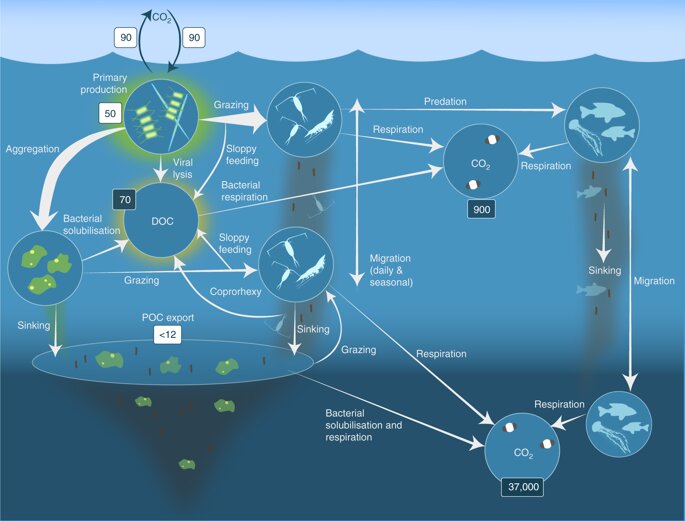Salps are gelatinous animals that live in our oceans, they move up and down the water colum sometimes 600 meter, spending nights at the surface and days in the dark depths. They are interesting because they eat planktomn and other ocean greens and turn them into pellets. The pellets sink to the ocean floor and thus sequester carbon, take it out of the atmosphere.
It is not enough to capture CO2 by algae in our oceans, to promote that capture by iron fertilization or deep ocean upwelling fertilization. This is because the biomass created tends to be metabolized back into methane or CO2 as long as it stays near the surface. Cell particles are nutritious to animals, so you capture CO2 in the biomass of various organisms, but you really want a pump of carbon down to the deep ocean floor.

Obviously the biological web in our oceans is still complex. Acidification and deoxygenation and warming are changing that. We need this web however, both to generate oxygen and to capture and sequester CO2. Right now there are no large scale plans, especially not out of economically driven regions. We need more experiments that aim to keep oceans or part of them cool enough and oxygenized and pH neutral enough for life.
Keeping our oceans alive is a challenge we need to meet, we need that carbon sequestration capacity online.
Our minds desire to identify a simple easy to circumscribe action in order to build its drive to actually go ahead and try to achieve it. The best motivator is to hit a target, a moon shot, for SpaceX it’s reaching Mars. We need such a goal for our oceans. What would that be? If you have a suggestion send it to our @climatebabes account on Twitter.
